at stand
F14
@Airspace
World
2023
While the fidelity of ATC simulation has improved in great strides over the years, how we use ATC simulators has stagnated for over a decade. Now that’s all changing with TotalControl simulation in the cloud, explains TotalControl Product Manager Jonny Cooke.
Product Manager
Airways International Ltd
The advanced air traffic control (ATC) simulation technology of today is a far cry from that of the early days of ATC, when a “simulator” consisted of wooden aerodromes crafted on top of desktops and aircraft models flying around attached to coat hangers.
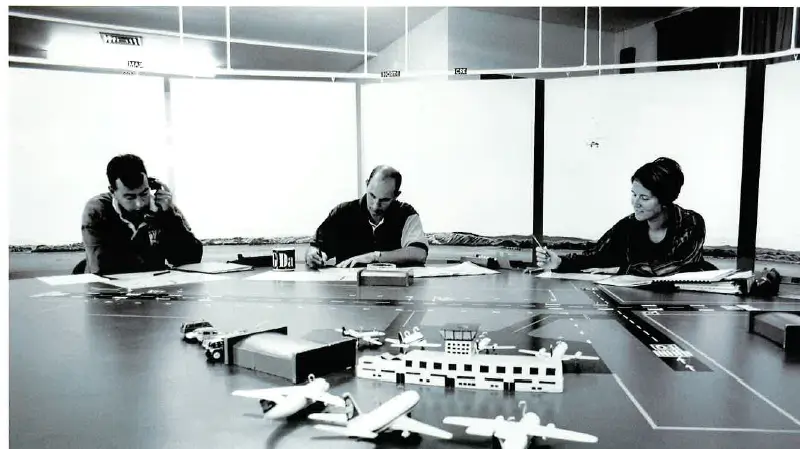
As the digital age rolled on in, ATC simulation quickly took advantage, moving in leaps and bounds to the point now where stepping foot in a simulated tower CAB is almost indistinguishable to the real thing.
While the fidelity of our simulations has improved in great strides, how we use our simulators has stagnated for over a decade. The typical simulation experience includes:
- On premises only solutions (or remote capabilities enabled via complex and expensive networking)
- Operational controllers travelling to dedicated training centres for sim training
- Large capital investment project for procurement and commissioning
- Travel-heavy implementation with customers and suppliers spending significant time out of country
- Perpetual software licences with an ongoing maintenance and support agreement (typically 3-5 years)
- Local simulator teams put in place to manage and operate the sim (Pseudo Pilots, maintenance, instructors etc.)
For many ANSPs, this investment makes sense because they train at a scale that justifies it. For others however, there are some real challenges associated with this traditional model:
- They lack the scale or training need to justify such a large investment
- They have a dispersed work force, making the logistics and costs to travel to a fixed location difficult
- The cost to acquire a perpetual software licence when they may only train a few months in a year doesn’t stack up.
The alternative that ANSPs often fall to is outsourcing their training to an external provider, which is also expensive, time-consuming and impactful to operational rosters.

A need to adapt
As we all know, COVID-19 was a massive disruptor to the aviation industry, and ATC training was no exception. The training model that worked for so many years suddenly failed, as aircraft were grounded and staff could no longer travel to an on-premise simulator. This was the reality for us here at Airways and for our customers around the globe.
We decided that the time was right for a step change in simulation, and we began work immediately to change how we delivered sim training. We looked at three main value propositions.
Seamless and secure
- One click software updates
- Secure cloud backups and rollback
- Advanced cloud based systems, monitoring and analytics
Collaborate and sync
- Work on aerodrome updates remotely with your team
- Tweak and test locally, deploy globally
- Keep track of all past changes and data history
Train anywhere
- Setup any PC anywhere to run simulations across the country
- Deploy multi-trainee simulations across the country
- Access new types of sim training and self-study opportunities
The results
Sim-in-a-Suitcase
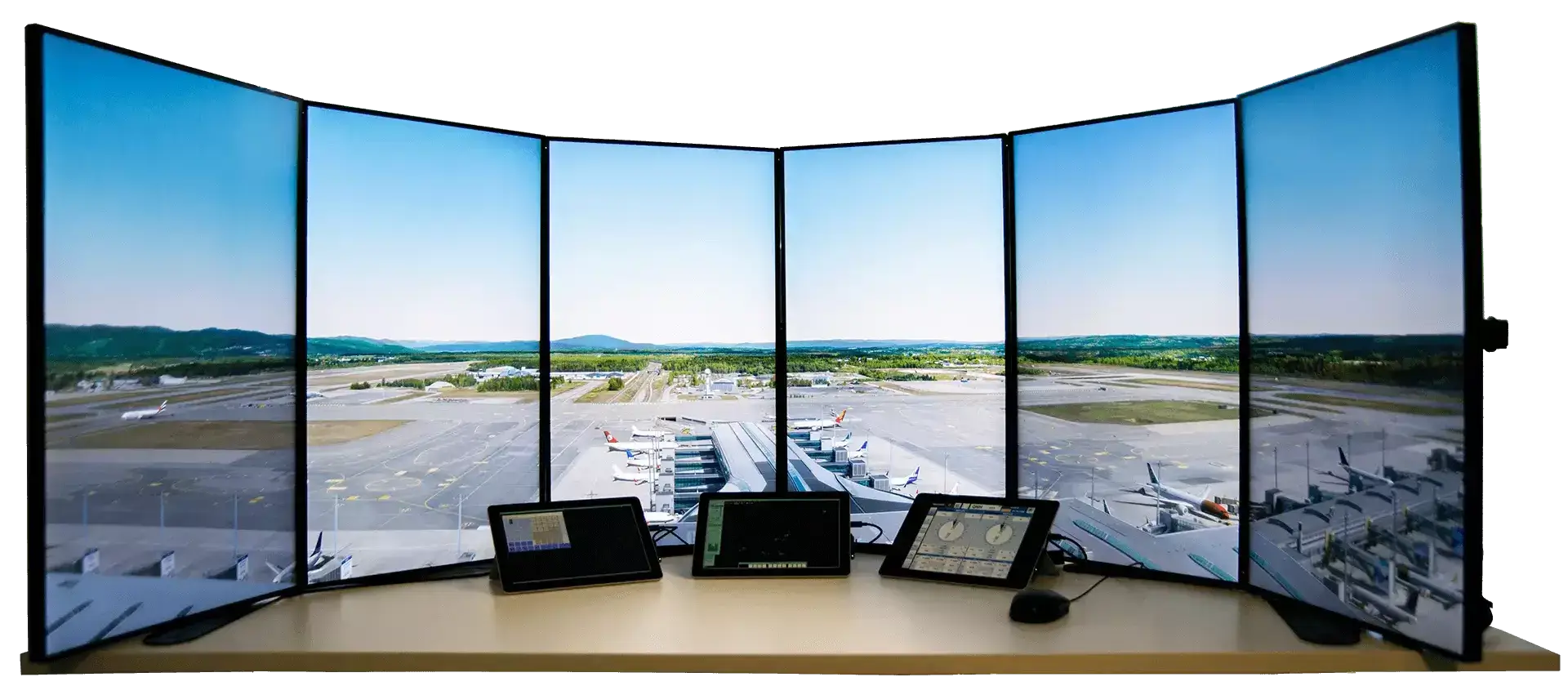 We are almost two years into our cloud-based journey and have achieved some exciting results with our new modular sim configuration, Sim-in-a-Suitcase. In developing this we had some key criteria in mind:
We are almost two years into our cloud-based journey and have achieved some exciting results with our new modular sim configuration, Sim-in-a-Suitcase. In developing this we had some key criteria in mind:- It had to be able to be checked in as luggage on a standard flight
- It had to be modular in design, with each case and content identical and able to be used in multiple ways
- It had to be durable
- And most importantly it had to able to be setup in 20 minutes or less, by an ATC.
The Sim-in-Suitcase has been a popular configuration due to its affordability and flexibility. It's the perfect companion to our new cloud capabilities and was a big part of what enabled sim training to continue right through Covid-19 lockdowns for many of our customers.
TotalControl on the Cloud
We're proud to say that TotalControl is now a cloud-based ATC Simulator. When we say cloud we don’t mean using network tricks such as VPNs - we mean a true, integrated solution across our software suite.
What does that mean for our customers? In short, if you have an internet connection and a laptop or PC you can install, sync, run and modify your sim data from anywhere in the world. That includes participating in any running exercise remotely, monitoring your sim's performance and checking a trainee’s competencies.
It was a long process of not-so-glamourous work, but it's a milestone that opens the door for something very exciting.
A new model for simulation
One vision for our investment into portable simulation and cloud capability is to make ATC simulation more accessible. What if buying a sim and starting some refresher training didn’t have to be such a large investment, what if your simulator could be flexible enough to fit into whatever training delivery model your organisation needs? What if we thought of simulation as a service?
There are so many pieces of the simulator puzzle that all need to fit to make sure that you're ready to go and start training. You need hardware, software, airspace data implementation, exercises created, sim pilots, instructors - the list goes on. What if you could pay for what you need when you needed it?
We want to enable customers who have a desire to establish their own simulation capability and seek:
- low barriers to entry
- the flexibility to turn their sim on and off and not incur costs if they aren’t running training
- the ability to choose from a wide range of simulation services based on their current team size and capabilities.
Highly realistic simulation technology is important to our customers as they seek to reduce the time and cost of their training, and they’re looking for more choice in how ATC training is delivered. That's where TotalControl comes in - and coupled with our other digital training tools such as AKO virtual academy and AirBooks, we're allowing students to learn anywhere and at any time.
Combined with a looming global shortage of air traffic controllers due to a retirement bubble and a tight labour market, selection is becoming an increasingly important focus.
Head of Products,
Airways International Ltd
So how do ANSPs reach and identify the people likely to make a great ATC? And what kind of testing is required to assess a candidate’s situational awareness, and the ability to make rapid decisions under pressure?
ANSPs’ ATC selection challenges
During the development of SureSelect, Airways’ ATC selection solution, we’ve spent many years conducting market research with ANSPs globally to understand their ATC recruitment and selection challenges.
The challenges of successfully identifying and recruiting that 5% of the population range from how to attract such a small and unique target group during a looming global shortage of ATCs, through to choosing the specific assessments that will help the decision maker select the right people for the job.
- Attraction: Recruitment campaigns need to stand out from the crowd, and have wide reach – in a tight recruitment market, you’re competing with multiple and more well-known career options
- Finding the right mix: Selecting the right people for training, who possess the unique set of competencies required to be an ATC needs a robust and validated selection methodology. The stakes are high for getting it wrong – failures in training have both a human and financial cost, to the candidate and the ANSP.
- Choosing the right selection tools: One size does not fit all when it comes to ATC selection. A specifically designed selection solution is required, based on validated research and global best practice.
- Providing a good candidate experience: Candidates need to understand the selection process, be engaged with gamified, easy-to-use assessments, and have easy online access to be able to take assessments anytime, anywhere.
How can we support ANSPs to choose the right people?
Identifying and selecting the right candidates that possess the core competencies predictive of ATC success requires decision makers to make an impartial, informed choice between candidates.
Airways can support with ATC-specific assessments on an easy-to-use online system, providing ANSPs with crucial information to support their selection decisions.
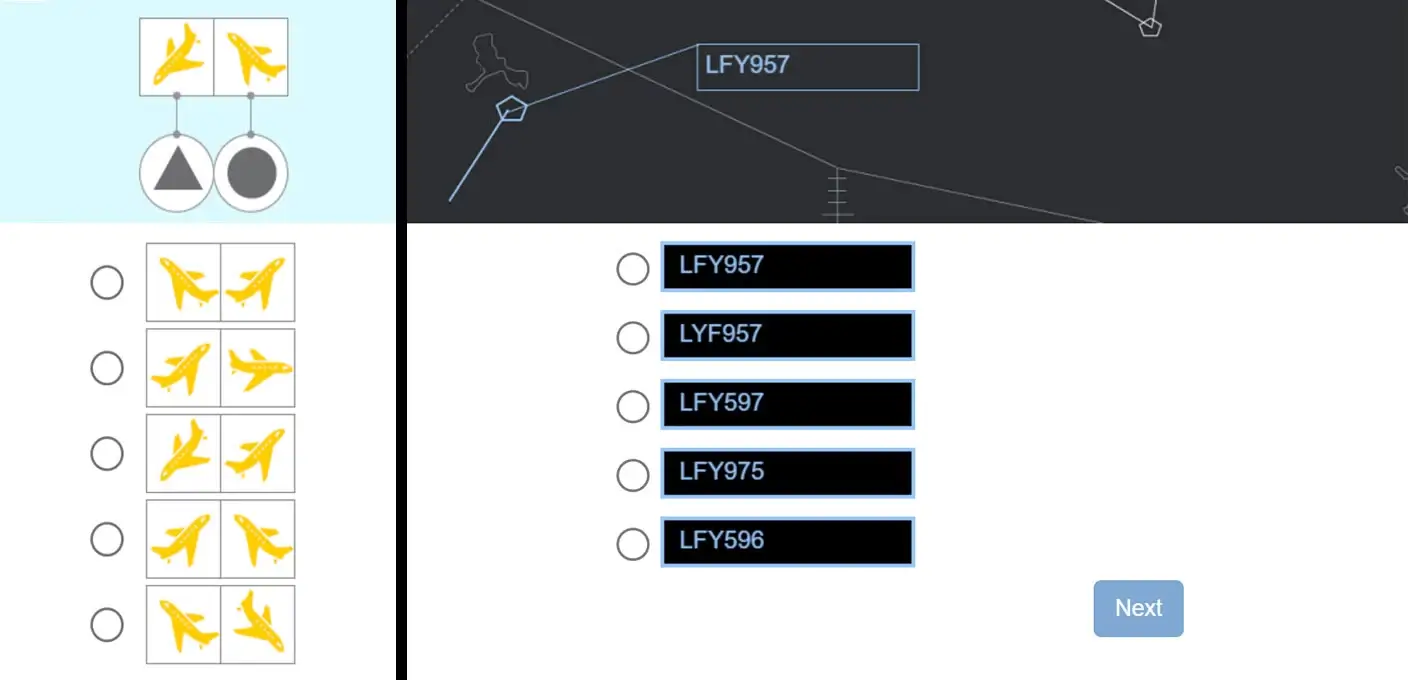
SureSelect's ATC-specific assessments simulate key skills required by ATCs.
What are decision makers looking for in a solution?
From our research, we’ve learned that talent acquisition and air traffic services teams need access to an easy-to-use cloud-based assessment & reporting system that supports the following:
- Scalability: cloud systems provide additional processing and storage to support increased applicant volumes without any disruption to testing, enabling a seamless candidate testing experience.
- Flexibility: ANSPs can decide if they want applicants to undertake testing remotely, in a supervised environment(s) or a hybrid of both.
- Automation: Selection tools that support bulk sending of tests and automated reminders reduce manual involvement in the process.
- Objectivity: Using a validated battery of tests reduces bias by providing objective data to support decision making.
- ATC specialisation: Assessments created specifically for ATC candidates provide high face validity (measuring what they’re supposed to as well as looking like what you’d expect).
- Real-time data: providing meaningful information such as candidate rankings (not just sten scores and raw results). Decision makers in various locations should all be able to see results and collaborate on next steps.

The SureSelect online platform provides real-time result updates, ranking of results and detailed per-assessment reporting.
How can SureSelect support ANSPs?
SureSelect has been developed with all of these considerations in mind, and continues to evolve. Our range of validated ATC-specific test suites are being used by ANSPs around the world – in different ways, depending on their needs and budget.
The Covid-19 pandemic saw many organisations embrace new ways of doing things, including online testing which in addition to providing real-time results, reduced travel costs, time and carbon footprint.
The flexibility inherent in a cloud-based solution allows ANSPs to fit SureSelect into their processes, as these examples show:
- Azerbaijan Air Navigation Services (AZANS) tested applicants in small groups as they applied, effectively having continuous recruitment, testing and the ability to constantly review results online until their trainee quota was filled.
- Airservices Australia continued to recruit during the height of the Covid-19 pandemic, using SureSelect’s remote testing option. They innovated their processes even further by undertaking a virtual assessment centre for activities such as verification testing and interviewing.
An eye to the future
As air traffic management continues to embrace change such as the rise of digital towers and an evolving mix of airspace users including uncrewed aircraft and advanced air mobility, in time this may lead to additional desirable candidate attributes or skills – selection tools will also need to evolve to keep pace.
At Airways International, we’re keeping a close eye on the airspace management industry so that we can continue to develop SureSelect to meet the changing needs of ATC selection decision-makers.
Head of Aviation Services, Greg Tyrrell highlights the work we’re doing to support and assist our Pacific neighbours.
Head of Aviation Services
Airways International Ltd
The New Zealand Government has a long-term strategy to achieve a stable and prosperous Pacific region, in close partnership with Pacific countries, regional organisations and other development partners. In its support of the Pacific, the Government has moved from a “Reset” approach to “Resilience” – strengthening the resiliency of Pacific communities through integrated partnerships.
So where does Airways fit in to this?
Well, alongside the Government we’re also aligning to the 2050 Strategy, to provide our support for achieving stability and prosperity for the Pacific region. Our vision is to work alongside Pacific nations to achieve the same standard of aviation infrastructure, service, customer value and safety across the Pacific, as that provided in New Zealand.
Long term – building relationships
At Airways we’re focused on long term relationships in the Pacific, while also delivering tangible shorter term assistance.
We’re involved in multi-national forums and engaging internationally focused stakeholders in aviation across the region. This has been more challenging over the Covid-19 period, but now that travel restrictions are lifting I’m looking forward to re-engaging in person. Examples of organisations we regularly engage with are:
- Pacific Aviation Safety Organisation (PASO)
- Association of South Pacific Airlines (ASPA)
- NZ Pacific Business Council (NZPBC)
- Ministry of Foreign Affairs and Trade (MFAT)
- The World Bank.
Our collaboration with organisations focused on long-term investment in the region is critical to move towards the 2050 vision. Airways' work with MFAT on the Pacific Aeronautical Charting and Procedures (PACP) project - a four-year programme to upgrade decades-old air navigation procedures and charts - is strong evidence of the benefits of collaboration to the economic prosperity of the Pacific region.
Short term – providing services
Airways International has a long history of providing products and services to the Pacific region, and we continue to proactively engage with Pacific nations to ascertain how our skills and experience can best be utilised.
Key to this is understanding the level of assistance they need. We do a lot of listening, and tailoring our support to what is really needed for that particular customer.
Services we provide
Airways supports nations where a lack of scale makes it challenging for them to have internal capability – due to many factors it’s often far more efficient for smaller Pacific nations to outsource some services. Examples of how we're currently supporting Pacific nations:
- Upper airspace management
- Flight procedure design and maintenance
- Navigation aid inspections
- Maintenance support
- ATC simulation.
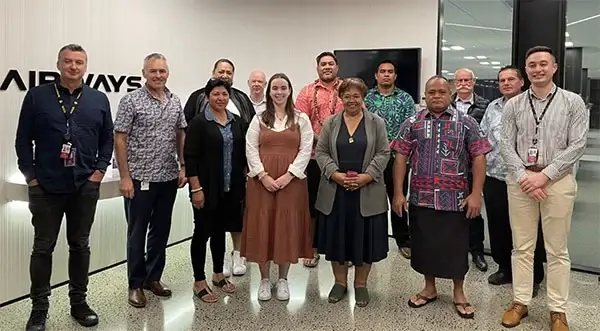
Upper Airspace Operational Conference – Auckland, December 2022.
Training
We're also assisting nations to introduce or maintain internal capabilities in some areas. ATC and technical training is a good example of this - we can provide training either in person (in NZ or in the Islands) or remotely through our Airways Knowledge Online (AKO) virtual training academy.
Consulting
We provide consulting services for nations who are looking to expand an existing capability, but seeking advice and assistance. A great recent example of this was Airways assisting Fiji with the introduction of a surveillance service.

Assisting with the introduction of Approach surveillance services in Fiji.
Building a sustainable future for the Pacific
If we’re going to make the generational changes required for a sustainable future in the Pacific, we need to set the foundation of trust, while taking tangible small steps now.
While making a real difference in the short term, we need to continue to build long term relationships and rapport to enable rational discussion around the options for fundamental change.
With the inroads that Airways is making with our Pacific neighbours, I’m confident that through collaboration, together we will be a long way towards achieving the 2050 vision.
We look forward to reconnecting with our customers, partners and industry colleagues at this important event - come and visit us on Airways’ stand F14, and learn about the latest Airways International developments and industry insights.
CEO
Head of Commercial
Head of Aeropath
Digital Solutions Sales Director
Manager, Procedure Design Aeropath
Manager, Aeronautical Information Management Aeropath
TotalControl Product Manager
AirShare Product Manager
Technical Sales Director
We look forward to reconnecting with our customers, partners and industry colleagues at this important event - come and visit us on Airways’ stand F14, and learn about the latest Airways International developments and industry insights.
We expect our TotalControl simulator with real-world graphics based on our unique TrueView technology to draw many visitors to our stand, as we demonstrate how remote sim piloting works with TotalControl.
We'll be showcasing our range of products & services, including:
- TotalControl ATC simulation
- Airways Knowledge Online (AKO) virtual academy
- AirShare uncrewed traffic management system (UTM)
- SureSelect ATC selection - toolkit of test suites
- Procedure design and aeronautical information management (AIM) services - via Aeropath.
Product spotlight: Flight Advisor online mapping tool
This year we are proud to present a new digital product, Flight Advisor. This interactive web-based mapping tool improves situational awareness and enhances safety for pilots operating at low levels in uncontrolled airspace.
Developed by Aeropath in conjunction with the Royal New Zealand Air Force, Flight Advisor has been shortlisted for both the CANSO Global Safety Achievement Awards, and the ATM Awards in the Innovation category – we’re very proud of our Aeropath team, and to be amongst many very worthy and deserving organisations on the shortlists!
Flight Advisor presentation: Matt Day
Frequentis Theatre, Weds 8 March, 12.30pm
Head along to the Frequentis Theatre to hear Matt Day, Aeropath’s Manager Aeronautical Information Management share his insights into the development and use of Flight Advisor, and how the tool is enhancing safety for New Zealand military and civilian airspace users.
Come and see us on stand F14, we’ll be delighted to welcome you!
Airways International attendees
This new website for Airways International presents all of our products and services in one place, enhancing visitors’ online experience with a modern, easy-to-navigate site and quick and easy access to the information they need.
On the website you’ll find an integrated e-commerce function, where AKO virtual academy courses and AirBooks can be easily purchased online; an informative news & updates section including media releases and thought leadership articles from Airways International leaders; and useful information about career opportunities with Airways International and working with us.
We hope you enjoy browsing! Visitors to the Airways New Zealand website will continue to find useful information about Airways operations, as well as handy links to the Airways International website.
Meet George Ridd – AirShare Product Manager, based at Airways International’s offices in Christchurch, New Zealand.
In this Q&A with George, he shares a little about his role, and how AirShare is continuing to evolve to deliver value for our customers and meet the needs of the rapidly changing UTM industry.
AirShare Product Manager
Airways International Ltd
What is AirShare?
AirShare is an uncrewed aircraft traffic management (UTM) system built to support the acceleration of uncrewed aviation by creating an environment that enables the UTM ecosystem to grow and flourish.
We achieve this through providing services based on information sourced from a range of system integrations and other data sources to create a single source of the truth about airspace and UAV operations. This information is then made accessible to stakeholders, enabling them to use the services and consume the data they require to deliver services and/or manage risk.
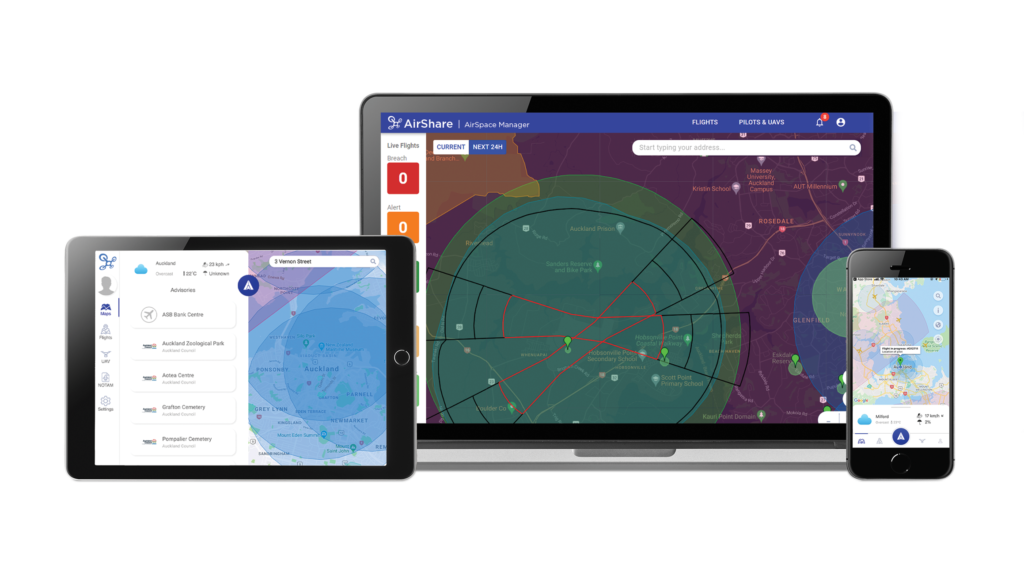
What is your role as AirShare Product Manager?
Building a product that delivers value to the customer by supporting safe, integrated airspace management. In my role as product manager this means:
- Maximising resources by deploying them on tasks that add real value to AirShare
- Ensuring that AirShare stays focused on solving user problems
- Effectively managing the product backlog
- Keeping the Product team aligned on shared priorities
- Building trust with stakeholders who can see that you’re creating real value for them.
What do you think are the biggest challenges in the UTM industry?
It’s clear that the technology is rapidly outpacing regulations. This, along with standards development presents a barrier to realising the potential of the technology. Converting some of the promising industry-led trials to operational models also poses a challenge.
Specifically relating to UTM, a key challenge is developing a scalable solution that can accommodate volumes of airspace traffic that is anticipated to well exceed the design of traditional ATM systems.
What do you think are the biggest innovations in the UTM industry?
Within the UTM industry there are a number of promising innovations and trials of new technologies happening. Some favourite developments of mine are the digital notifications of launches and landings, a common operating picture showing both crewed and uncrewed aviation and the increased situational awareness that brings.
There have also been some interesting innovations in the drone detection space and how that data could be integrated into a UTM solution. We at AirShare are ready to integrate with that data to show airspace managers which detected targets are truly uncooperative versus those that have authorisation to operate.
What is AirShare doing to align with developments around the world?
Our team is closing watching the emerging regulations, standards and industry activity around the world, and we are broadly following the U-Space roadmap concepts in our development work.
We're really looking forward to working with other airspace managers and regulators in New Zealand and globally as we continue to evolve AirShare to meet industry needs.
